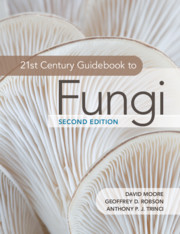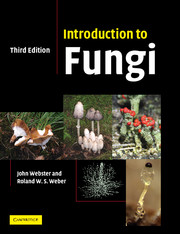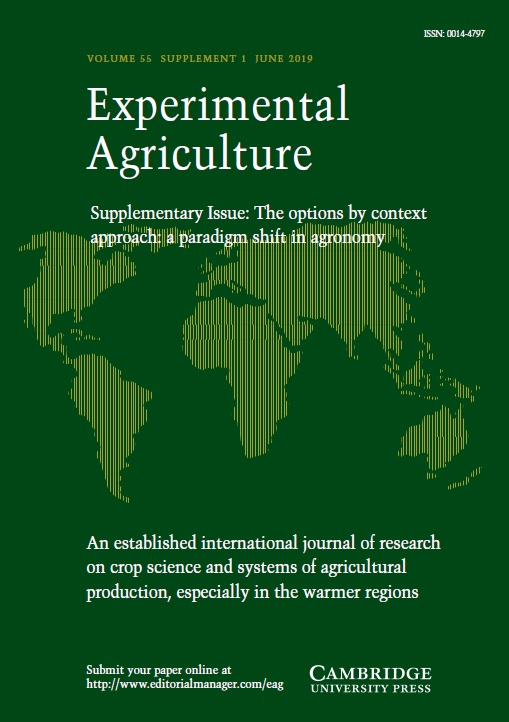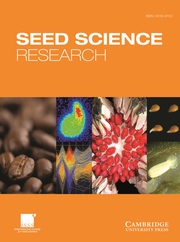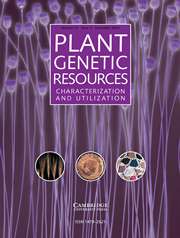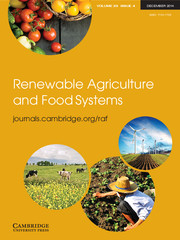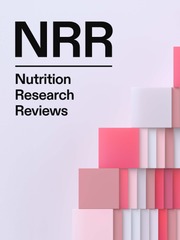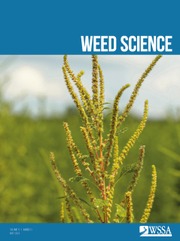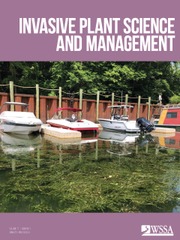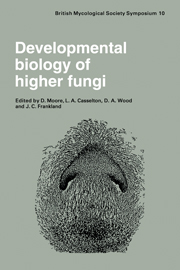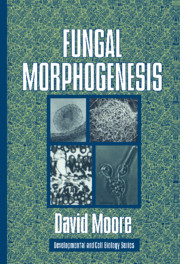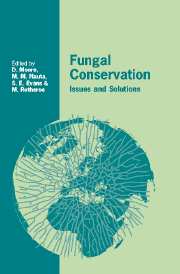21st Century Guidebook to Fungi
with CD-ROM
- Authors:
- David Moore, University of Manchester
- Geoffrey D. Robson, University of Manchester
- Anthony P. J. Trinci, University of Manchester
- Date Published: August 2011
- availability: Unavailable - out of print
- format: Mixed media product
- isbn: 9780521186957
Mixed media product
Looking for an examination copy?
This title is not currently available for examination. However, if you are interested in the title for your course we can consider offering an examination copy. To register your interest please contact [email protected] providing details of the course you are teaching.
-
Fungi have their own unique cell biology and life cycle, but also play critical roles in wider biological systems. This textbook provides a comprehensive view of fungal biology, ranging in scope from the evolutionary origins of fungi and other eukaryotes more than a billion years ago, to the impact fungi have on everyday life. Bringing mycology teaching right up to date, this unique systems biology approach emphasises the interactions between fungi and other organisms to illustrate the critical roles that fungi play in every ecosystem and food web. With more than 60 colour figures, examples of computational modelling and resource boxes directing students to areas of interest online, this book gives students an appreciation of fungi both at the organism level and in the context of wider biology. A companion CD accompanying the print book features a hyperlinked version of the book and the fully integrated World of Cyberfungi website.
Read more- Unique system biology approach helps students to appreciate fungi as critical components of wider ecosystems
- Over 20 resource boxes point students towards sources of further information, with DOI numbers included where possible to allow quick and easy access to the original electronic documents
- Companion CD features a hyperlinked version of the book, the fully integrated World of Cyberfungi website and the Neighbour-Sensing interactive fungal growth simulator program
Reviews & endorsements
"The content and quality of this book is simply breathtaking! This book is useful for a wide audience. It is not just for the practicing or future mycologist, lichenologist, phycologist, plant biologist, or systematist; it is also ideal for the environmental or health professional. The information on habitat and ecology make the book invaluable as a laboratory and professional aid. The cell biology and genetic information is current and thorough, and offers numerous topics for practical application in research; thus the book is also an important supplement to the cell and molecular biologist's library. Highly recommended."
L. Swatzell, ChoiceSee more reviews"It is written in a delightful prose, integrating concepts and interdisciplinary knowledge. 21st Century Guidebook to Fungi combines clear explanation of details with descriptions of big concepts, bringing together interdisciplary areas. The CD is a great resource, and the overall result ia very useful book for fungi aficionados, experts, students, and classroom teaching. This book could become a classic in the field and will be an enjoyable read for anyone wanting to learn more about fungi."
Olga R. Kopp, Plant Science Bulletin"The authors' clear, comprehensible and accurate writing style is just perfect for a textbook. The 21st Century Guidebook to Fungi contains an enormous amount of referenced, up-to-date information about the third eukaryotic kingdom, while following a systems biology approach and strongly emphasizing the interactions of fungi with other organisms and ecosystems … It has the potential to spark and nourish a many a biologist's interest in mycology - this fasicinating, poorly understood corner of the biological world."
Christine Hassler, Lab Times"This remarkably comprehensive volume will be useful to every scientist and educator whose work touches on the fungi, and it is coming out just as the tsunami of fungal genomes is gathering. This 21st Century Guidebook to Fungi will provide a wealth of background information necessary for interpreting the coming flood of data from various “-omics” technologies in fungal biology."
David S. Hibbett, The Quarterly Review of Biology"This is an innovative text, both in its presentation and its organization. The authors' broad experience and nearly encyclopedic knowledge lend strength and their many years of teaching experience all increase its value. The volume is remarkably well written and well-copy edited. This book is a marvelous effort to holistically integrate mycology into modern systems biology."
David Yohalem, Mycological Innovations for InoculumCustomer reviews
Not yet reviewed
Be the first to review
Review was not posted due to profanity
×Product details
- Date Published: August 2011
- format: Mixed media product
- isbn: 9780521186957
- length: 639 pages
- dimensions: 275 x 219 x 31 mm
- weight: 1.92kg
- contains: 406 b/w illus. 57 tables
- availability: Unavailable - out of print
Table of Contents
Preface
Part I. Nature and Origins of Fungi:
1. 21st-century fungal communities
2. Evolutionary origins
3. Natural classification of fungi
Part II. Fungal Cell Biology:
4. Hyphal cell biology and growth on solid substrates
5. Fungal cell biology
6. Structure and synthesis of fungal cell walls
Part III. Fungal Genetics and Diversity:
7. From the haploid to the functional diploid: homokaryons, heterokaryons, dikaryons and compatibility
8. Sexual reproduction: the basis of diversity and taxonomy
9. Continuing the diversity theme: cell and tissue differentiation
Part IV. Biochemistry and Developmental Biology of Fungi:
10. Fungi in ecosystems
11. Exploiting fungi for food
12. Development and morphogenesis
Part V. Fungi as Saprotrophs, Symbionts and Pathogens:
13. Ecosystem mycology: saprotrophs, and mutualisms between plants and fungi
14. Fungi as pathogens of plants
15. Fungi as symbionts and predators of animals
16. Fungi as pathogens of animals, including man
Part VI. Fungal Biotechnology and Bioinformatics:
17. Whole organism biotechnology
18. Molecular biotechnology
Part VII. Appendices: Appendix 1. Outline classification of fungi
Appendix 2. Mycelial and hyphal
Index.-
Find resources associated with this title
Type Name Unlocked * Format Size Showing of
This title is supported by one or more locked resources. Access to locked resources is granted exclusively by Cambridge University Press to instructors whose faculty status has been verified. To gain access to locked resources, instructors should sign in to or register for a Cambridge user account.
Please use locked resources responsibly and exercise your professional discretion when choosing how you share these materials with your students. Other instructors may wish to use locked resources for assessment purposes and their usefulness is undermined when the source files (for example, solution manuals or test banks) are shared online or via social networks.
Supplementary resources are subject to copyright. Instructors are permitted to view, print or download these resources for use in their teaching, but may not change them or use them for commercial gain.
If you are having problems accessing these resources please contact [email protected].
Sorry, this resource is locked
Please register or sign in to request access. If you are having problems accessing these resources please email [email protected]
Register Sign in» Proceed
You are now leaving the Cambridge University Press website. Your eBook purchase and download will be completed by our partner www.ebooks.com. Please see the permission section of the www.ebooks.com catalogue page for details of the print & copy limits on our eBooks.
Continue ×Are you sure you want to delete your account?
This cannot be undone.
Thank you for your feedback which will help us improve our service.
If you requested a response, we will make sure to get back to you shortly.
×

